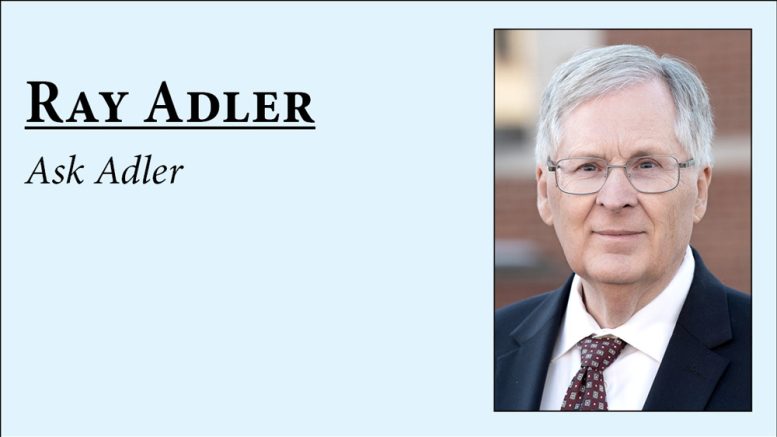I inherited an 80-acre farm from my grandfather, Thomas H. Baltzell. It came with family stories. (No one could remember whether it was Thomas Huffman Baltzell or Thomas Hoffman Baltzell, so I use only the ‘H’).
The barn was large by community standards. My grandmother, Theresa, remarked that as a young girl she had helped fill the barn to the peak with loose hay. From rough calculations, that would be more than 10,000 cubic yards of hay! The hay was necessary because great-grandpa was a large sheep farmer, serving as president of the Indiana Sheep Association and selling sheep overseas in Europe from his prize-winning flock.
At some point the barn had several horse stalls, and my father remarked how as a five-year-old boy he had taken a pitch fork and poked on the rear end of one of the work horses. He recalled how he was lucky to be alive as the horse gave a mighty kick that was just short of paydirt.
In addition to a large barn, the farm had a corn crib-granary combination and a large hog barn made out of clay tile. Inside the hog barn were numerous pens, each of which had access out the south side to the hog lot. Along the north side of the east/west situated building was a walkway and at about halfway across the building was a dug well to provide water for the hogs. At one time, one of the large hogs got loose in the walkway area and fell into the well. Grandfather Carl put a ladder in the well and retrieved the large hog. Grandma remarked that he was only able to do so because of his remarkable strength. Family history had him at 6’6” tall and 265 pounds. In reality he may have been as short as 6’1” or 6’2”.
I saw him perform various remarkable feats of strength. I remember one happened when he was in his early 70s. As a young boy, I helped him build a large 12-by-12-foot barn door with a 2-by-4-inch frame and shiplap siding. When complete, he hung it on the barn himself, much to my amazement.
The hog barn was the first of the buildings to be torn down. They are all gone now as their useful life expired some years ago. When dad decided it was time to remove the hog barn, I was in college at Purdue and had studied physics the semester before our summer demolition work began. Dad hooked chains to rafters and a large tractor but was unable to pull the roofing from the building. That’s when my physics force vector learning became useful. (Perhaps the only time.) I obtained an eight-foot-long 2-by-12, held it vertical to the roof face and placed the log chain on top of the 2-by-12 while dad hooked it to the roof rafter and the tractor. Miraculously, the whole roof just peeled off.
Just north of the buildings along the road were three large cottonwood trees. Lightning had struck one of them and it had been doctored by my great-uncle who plastered the large crack shut. That saved the tree for another 20 years. The other cottonwood was cut down by my great-grandfather to build his house, and it was reported that it furnished enough lath to build the entire 2 ½-story house across the road. A picture of the barn appeared in Martha Stewart’s Country Living magazine, although slightly altered to bring the house from the north of the road to the south side to make the traditional Indiana farm setting picture.
The 80 had an oil well that had long since been abandoned, and it was also well known in the area to be the purported burying spot of a large amount of gold, supposedly buried by the Miami Indians before they were driven from Indiana, the gold being payment for their land. Great-Grandpa recalled how he had to constantly drive away persons who were digging in the farm trying to find the gold.
When I was about 14, a large rock had worked up in the back southeast 20 acres of the farm. My father then, for the first time, told me the Miami Indian gold story. He said he was sure the gold would be under this large rock. Excited, I dug like mad to unearth enough of the rock that it could be pulled out of its place with a tractor and chain.
Indeed, I did find gold.
Great-Grandpa sold the gold, Grandpa sold the gold, my father sold the gold, and now I’m selling the golden ears of corn and recovering Indian jewelry and arrowheads – Indian gold.

